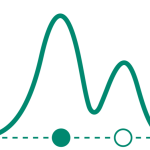
Process Development Forum speaks with Karol Lacki, Customer Collaborations Leader at Cytiva, about continuous chromatography.
There is a lot of attention being paid to continuous chromatography, and several different terms are being used: SMB, PCC, MCC. What is your view on the terminology? Is there a difference among them? The short answer is there is no difference. All of the acronyms describe the same thing: a chromatography capture step-based utilizing multiple columns operated in a merry-go-round manner, where columns moved against the direction of feed flow. As this movement is seen periodically, one could argue that the name Periodic Counter Current (PCC) is the most appropriate to describe what is really happening in a multicolumn system. However, for those familiar with the technology, the terms can be used interchangeably. As a matter of fact, an SMB system is always operated according to PCC principle. The name MCC might be a little bit more confusing because while it refers to Multicolumn Continuous Chromatography it does not tell anything about the principle of operation. Yet, all these abbreviations are known and recognized. What needs to be remembered is that there might be some subtle differences between how the multicolumn systems are operated and maybe, therefore, keeping all these abbreviations actually helps in recognizing to which specific technology one is referring.
There are also different approaches to the system and the number of columns in continuous chromatography: 2,3,4,8 or even more. What are the benefits and challenges associated with increasing the number of columns?
When it comes to the number of columns, it has been shown that 2 columns in a loading zone is typically enough, and that the addition of an extra column will only marginally improve chromatography media capacity utilization. Having said that, it is of paramount importance to realize that any multicolumn system operated in the merry-go-round manner will have a rate-limited step associated with the saturated column regeneration phase. Please remember that in PCC operation, when the first column in the loading zone reaches a desired saturation level and/or the second column starts to show product breakthrough, there must be a new column available to be placed in the loading zone. Therefore, to shorten the time bottleneck associated with the column turnaround time, one needs to split the regeneration phase into more sub-phases operated in parallel by adding more columns to the regeneration zone. Of course, the system complexity increases as each sub-phase will need to be supported by an additional pump. In addition, the more columns one has, more complex valve arrangements must be accepted. However, based on our analysis, 3- and 4-column systems will be sufficient to cope with most industrial applications. For the very low titer processes, or rather for the cases where the ratio of capacity-to-feed concentration is very high, even a 2-column system will be sufficient.
Can you comment on the importance of process development and control in the continuous process?
Process development and control are the two very important aspects related to continuous chromatography that create some confusion, or maybe better, are the subject of many discussions around continuous technologies. If we start with the process control aspect, remember that when we are comparing batch chromatography with a continuous operation we are still talking about the same chromatography step, operated according to the same chromatographic principle, using the same chemistries and hardware. The only difference is that we decide to perform certain tasks in parallel, which requires a slightly more complicated hardware.
From the process development and characterization perspective, the very same experiments can be used to obtain data that will describe both batch and continuous operations.
When it comes to process control, it will be close to impossible to disagree with a statement that a continuous process will require more automation, more sensors, and thus will generate more data. One can envision that future process control will be based on algorithms that will operate the process in a state where a product’s CQAs are not affected and that the process is operated at its current optimum conditions from the yield and/or productivity perspective. The process parameter, both key and critical, will have their ranges validated so even during manufacturing of a single batch, changes in these parameters will be allowed as long as the product’s CQAs are not changed. Obviously, links between the CQAs and process fingerprint defined through a combination of all data sources will need to be established. From the key process parameter perspective, certain technologies already exist that would control continuous chromatography systems based on process data.
The ultimate goal might be to combine disposables and continuous chromatography. Do you foresee any specific challenges?
This is an interesting question. Once I heard a comment that disposable technologies enable continuous manufacturing, and while I am not disagreeing with this statement, I am not necessarily a big fan of it either. In my opinion, disposable technologies are compatible with the continuous manufacturing concept. Continuous operation can be performed using standard stainless steel systems without problems and potentially at a lower cost. For instance, in the early days of implementation of SUS, an argument was made that SUS enables quicker changeover and thus improves manufacturing capabilities by allowing for more campaign, and/or products, to be produced. In the case of continuous operation, it can be argued that the number of campaigns is irrelevant, or the number of batches is fairly small as the length of a campaign is much longer as compared to batch operation. Consequently, the number of changeovers will be much lower and gains from using disposable technologies will be smaller. I have also heard comments that continuous operation requires sterile columns, which lends itself to the notion that the columns need to be disposable. Obviously, prevention of bioreactor contamination is of paramount importance if the reactor is operated in perfusion mode and is connected to a continuous chromatography system, but this can be realized inserting a mechanical barrier between the bioreactor and the system, and making sure that the system can be cleaned during the operation removing any potential bioburden risks.
Read More Q&As With Industry Leaders Here





